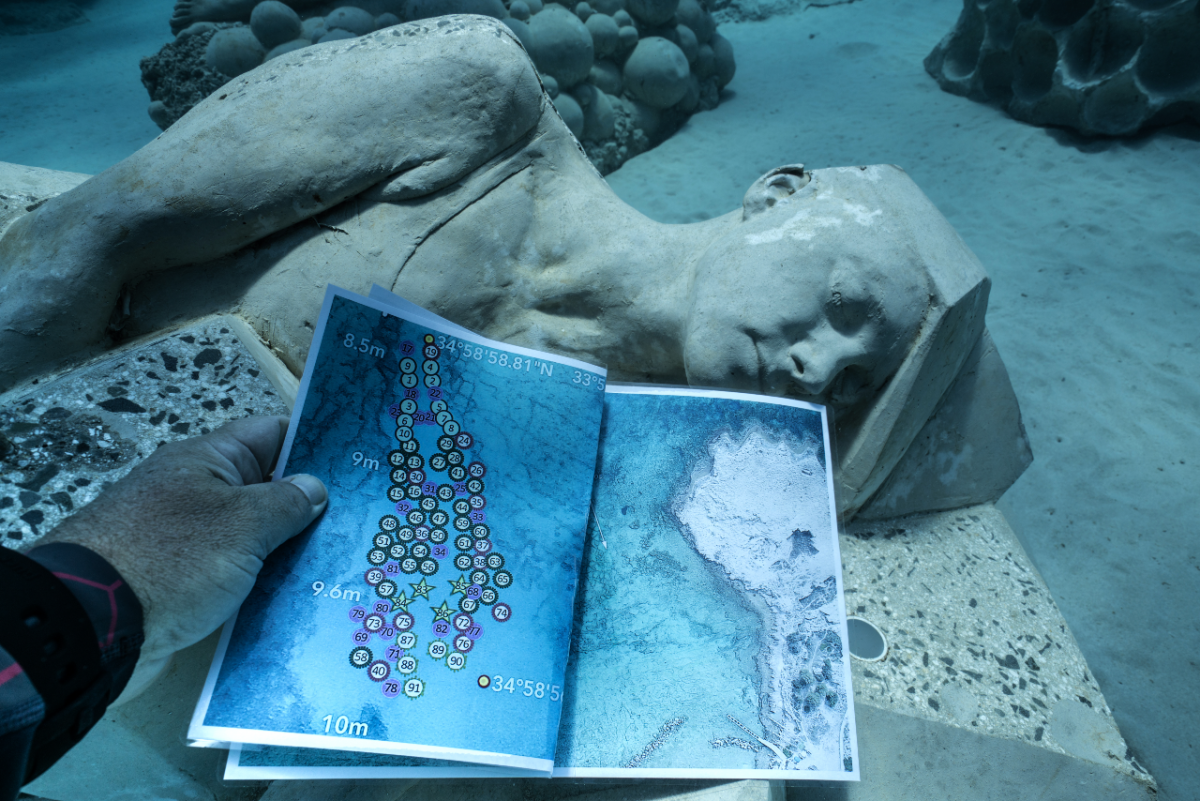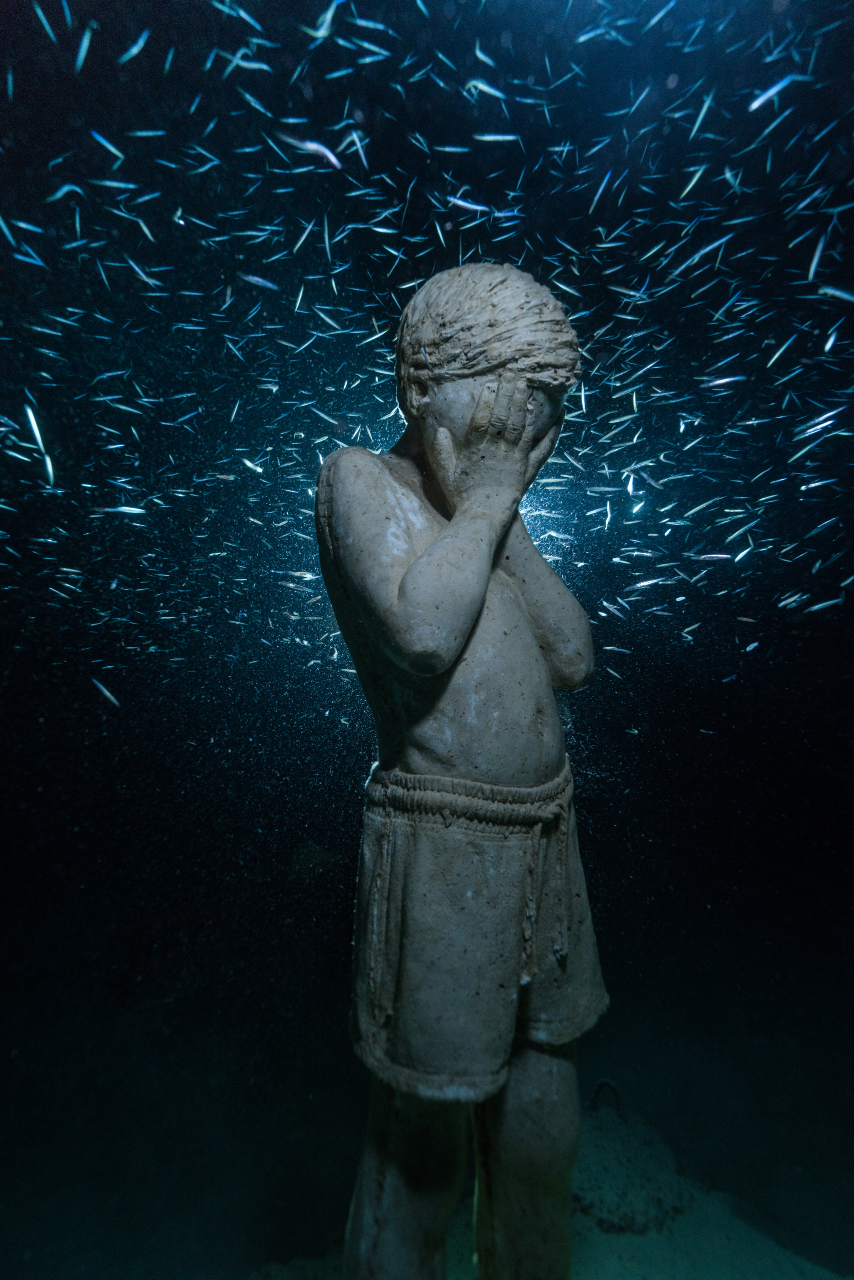
Picture yourself scuba diving to a museum show 32 feet below water. That is exactly what the recently opened Museum of Underwater Sculpture of Ayia Napa (MUSAN) in Cyprus offers.
Located off the coast of the resort city of Ayia Napa, the new aquatic museum features over 90 figurative and nature-inspired sculptures by British sculptor Jason deCaires Taylor, installed at the seabed of a marine protected area.

Taylor, a former diving instructor, is known for creating immersive submarine installations in different parts of the world. In past projects, he submerged hundreds of sculptures in the waters of countries like Spain, Australia, Mexico, and France. Taylor’s sculptures are made of sea materials — stones, rocks, and shells — and are meant to be inhabited by marine life.
According to the artist, the sculptures are “active catalysts in generating the recovery of coral habitats and reefs,” saying that some of his previous projects increased biomass by 200%.

“The sculptures are individually designed using safe pH neutral materials with textured surfaces to create homes, breeding areas and protective spaces,” Taylor explains on his website. The museum hopes that the site will eventually evolve into an “underwater forest.”
Taylor’s oeuvre includes works that pay homage to victims of the migration crisis who had died in capsized boats in the Mediterranean sea. Many others celebrate joy, innocence, and nature.


The €1 million (~$1.2 million) museum was backed by the Cyprus government and the Ayia Napa municipal council. The government, which included diving and snorkeling tourism in its national tourism strategy for 2030, is hoping to attract 50,000 tourists to the site annually.
Admission to the underwater museum is free; visitors can either bring their own diving gear or rent it from a number of diving schools in the area.
MUSAN joins other famous diving sites in Cyprus, like the ancient ruins of the Amathus harbor in Limassol and the wreck of the MS Zenobia ferry, which capsized and sank to the bottom of the Mediterranean off the coast of Larnaca in 1980.



0 Commentaires